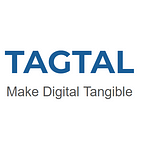Today’s blockchian is a world locked in scalars
Why there are few blockchain use cases beyond DeFi, NFT?How blockchain could be used in AAA games, AI?
If we know the major limitations of current blockchains we may know the answers and the future directions.
A World Locked in Scalars
Today’s blockchains, such as Bitcoin, Ethereum…, is a world locked in scalar mathematics . This is a fact that all blockchains are fundamentally based on <address, value> paragiagram. The values are numbers of acount balances, scalars in mathmatic terms. NFT (None-Fungiable Token) on Ethereum and inscriptios on Bitcoin have given a bit change on that. But few disussion about why NFT/inscriptios works.
The theroy behind of NFT and inscriptios is not only just meme or art, nor ERC 721, ERC 1155 or 404 but the dimentions extensions of blockchians from scalar to vector realm that is not discussed in public.
The blockchain scalar world is a metaphorical scenario where progress is hindered by sticking strictly to scalar mathematics, potentially overlooking the benefits and advancements that could be achieved through the exploration and application of more complex mathematical concepts like vector and matrix mathematics, or even higher-dimensional mathematics.
Scalar mathematics deals with one-dimensional quantities that have only magnitude, such as temperature, length, or mass. While it forms the foundation of much of classical mathematics and physics, many of the modern world’s problems and phenomena are multidimensional and require more sophisticated mathematical tools for their description, analysis, and solution.
Vectors and matrices, for example, are essential in fields such as physics, engineering, computer science, economics, and many others. They allow for the modeling of complex systems, from the behavior of particles in quantum mechanics to the dynamics of economies, from the processing of signals in electronics to the rendering of graphics in video games, and from the analysis of social networks to the operation of artificial intelligence algorithms.
Being “locked in scalar mathematics” might mean an inability or unwillingness to adopt these more complex mathematical tools, thus potentially limiting innovation and progress in various fields. For instance:
- **In Physics and Engineering:** Understanding forces, fields, and movements in three-dimensional space inherently requires vector mathematics.
- **In Computer Science:** Data structures and algorithms often leverage matrices and higher-dimensional arrays for efficient computation and data representation.
- **In Machine Learning and AI:** Algorithms heavily rely on linear algebra, probability, and calculus in multidimensional spaces to learn from data and make predictions or decisions.
Hence, advancing beyond scalar mathematics to embrace the full spectrum of mathematical concepts is crucial for innovation and the solution of complex, real-world problems.
From Scalar to Vector Blockchain World
Extending the scalar values to vectors in the context of blockchain transactions can significantly enhance the blockchain’s functionality and its application across various use cases beyond decentralized finance (DeFi). Scalars represent single-dimensional values, like the amount of cryptocurrency to be transferred in a transaction. However, vectors, which are multi-dimensional entities, can encapsulate more complex data and relationships.
By allowing transactions to include vector values, you could support a wider range of applications such as:
- Multi-Asset Transactions: Instead of a transaction representing a single asset transfer, vectors can represent the transfer of multiple assets simultaneously. This can simplify processes in ecosystems where multiple token types are frequently exchanged between parties.
- Complex Financial Instruments: Vectors can represent more complex financial instruments that have multiple parameters, such as derivatives with various underlying assets, strike prices, and expiration dates. This can expand the blockchain’s utility in sophisticated financial markets.
- Multi-Dimensional Data Recording: Blockchain applications like supply chain management can benefit from recording multi-dimensional data (e.g., quantity, location, time, condition) in a single transaction. Vectors can facilitate this by allowing transactions to carry comprehensive data sets.
- Conditional Transactions: Vectors can enable more complex conditional transactions based on multiple criteria. For instance, a transaction could be programmed to execute only if certain multi-dimensional conditions are met, enhancing smart contracts’ capabilities.
- Interoperability and Cross-Chain Transactions: By handling multi-dimensional data, vectors can facilitate interoperability between different blockchains or layers within a blockchain. This can support more complex cross-chain transactions involving multiple steps or conditions.
- Data Structuring and Management: For applications like decentralized identity or record-keeping, vectors can structure related data points efficiently. This can enhance data retrieval, analysis, and interoperability within and across decentralized applications.
- Enhanced Privacy and Security Features: Vectors can encode multiple aspects of a transaction or a smart contract’s conditions in a way that enhances privacy and security. For example, certain dimensions of the vector could be encrypted or obfuscated, revealing information only to authorized parties.
Extending scalar values to vectors in blockchain transactions introduces complexity in terms of data handling, storage, and processing. Smart contracts would need to be designed to parse and operate on vector data efficiently. Additionally, consensus mechanisms and network protocols may require adjustments to accommodate the increased data size and complexity. However, the potential for creating more versatile and functional blockchain applications makes this an intriguing direction for future blockchain development.
Writen assisted by ChatGPT.
